The Evolution of BLE 5.4: Scaling Sensor Networks in Healthcare
Bluetooth Low Energy (BLE) 5.4 has come to change the game in healthcare technology. When we talk specifically about wearable devices, the key factor is BLE 5.4’s Periodic Advertisement with Response (PAWR), which enables simultaneous communication between one device and thousands of sensors. This is done through a broadcast model, which eliminates the need for traditional, resource-hungry Bluetooth connections.
As the number of sensors used to monitor patients continues to rise, PAWR offers an efficient solution. Everything from vitals tracking to glucose levels monitoring can be managed in real-time without burdening the system thanks to BLE 5.4. By reducing memory and processing demands, PAWR cuts costs and ensures battery longevity, making it an ideal solution for wearable devices, home care settings, and even hospitals.
More info: u-blox NORA-B20 Series Featuring PAwR
Efficient, Secure, and Bidirectional Communication
Bidirectional communication in BLE 5.4 is another important advancement. Previous BLE versions featured primarily one-way communication, where sensors send the data without acknowledgement.
Now, thanks to this technology, sensors and central devices can trade information back and forth, with each package of data being acknowledged, thus ensuring reliable transmission. This becomes all the more critical in medical applications, where missing vital data like heart rate or glucose readings can have significant consequences.
Related: Browse through our selection of BLE modules
How BLE 5.4 addresses security
Security should remain at the top of priorities for virtually all applications, but when it comes to the healthcare industry, this is especially true. BLE 5.4 addresses security through direct advertising, which means that devices can specifically scan for and respond to pre-determined signals, keeping patient data secure and preventing intruders.
This level of security and control keeps unauthorized devices out of reach and prevents the interception of sensitive health information. As we continue to strive for precise, real-time information, we must always keep our focus on it being secure too.
Industry Adoption and Future Prospects
Although BLE 5.4 is relatively new, industry adoption is picking up quickly and stable. Companies like Nordic and Renesas are now offering BLE 5.4 integrated in their product lines, providing hardware solutions for medical devices to leverage PAWR.
This technology’s capacity for scaling sensor networks while reducing system complexity makes it ideal for engineers working on healthcare applications, from patient monitoring to asset tracking within hospitals. With the current trend, BLE 5.4 will quickly become a staple in healthcare technology, with its scalability, power efficiency, and security features making it the preferred choice for many medical solutions.
Goldilocks Evaluation Board for Healthcare Monitoring
A Platform Built for Diverse Monitoring Needs
Originally developed as a proof of concept, Future Electronics’ Goldilocks evaluation board provides a multi-sensor platform designed to monitor both environmental and physiological data. The board features gyroscopes, accelerometers, moisture, air quality, and temperature sensors, extending the application potential further than its original “baby monitor” purpose.
Explore our Goldilocks Demonstration Kit
The ability to monitor a wide range of physiological metrics is crucial in healthcare. For example, with sensors tracking movement and temperature, the Goldilocks board could be suited for patient monitoring in hospitals. Components like heart rate sensors were discontinued before the board was fully developed, however, the alternative solutions remain easy to integrate in order to achieve an even more comprehensive patient care.
Indoor Positioning: Enhancing Hospital Efficiency
Thanks to its use of ultra-wideband (UWB) technology, the Goldilocks board features indoor positioning capabilities. This is particularly interesting for a hospital setting, where the ability to track patients and equipment can drastically increase efficiency.
Related: See our position sensor selection
Through UWB, hospital workers can monitor the location of, for example, patients with dementia, and trigger alarms if they leave designated areas. This allows for quick intervention and increases patients’ safety.
In addition, UWB can help hospitals track critical equipment availability and location. Wheelchairs, beds, IV stands, etc… can all be precisely tracked, reducing mishaps in communication that could lead to missing equipment and delays in high-pressure environments such as emergency rooms. Knowing the availability and exact location of equipment and resources reduces bottlenecks and improves patients care, especially during peak periods.
Related: Explore our Wide Bandgap (SiC/GaN) resources by onsemi
BLE and UWB: A Powerful Combination
The Goldilocks board does a great job at bringing together BLE 5.4 with UWB technology, complementing the two with secure, wireless transmission of all sensor data. This powerful combination of wireless communications along with the wide range of sensors available in the board ensures healthcare providers access to real-time data without the need to interact or disturb the patient.
In tougher scenarios, like intensive care units, where continuous monitoring becomes crucial, BLE 5.4 low-power capabilities enable sensor operation for extended periods of time without draining resources.
A Glimpse into the Future of Healthcare
Thanks to its features, the Goldilocks board shines as a powerful tool and a glimpse on how the future of connected healthcare could look like. As hospitals continue to adopt sensor-based solutions, engineers must focus on finding solutions like this to help reduce operational costs while ensuring precise, efficient, and secure applications that give healthcare providers the tools they need to offer the best possible care for patients.
Before we move on to our third article in the series, The Role of IoT in Healthcare: Enhancing Connectivity and Data Access, do you have any Health and Wellness projects you’d like to take to the next level?
Send us an email and contact our experts at Future Electronics to get personalized engineering support for all your applications.






